#robert r. livingston
Text

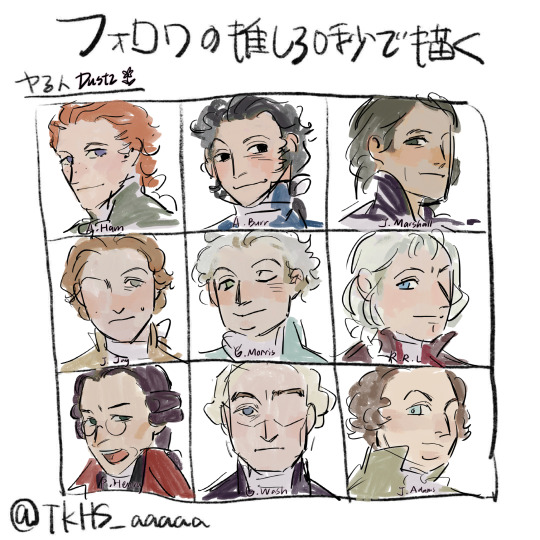
Too many old stuffs lol dk which to post everyday
tagging these names makes me sick
#amrev#amrev fandom#thomas jefferson#james monroe#james madison#martin van buren#andrew jackson#john quincy adams#daniel webster#john c. calhoun#henry clay#alexander hamilton#aaron burr#john marshall#john jay#gouverneur morris#robert r. Livingston#patrick henry#george washington#john adams
130 notes
·
View notes
Text






The rest of the founding cats are done plus King George cat cauee I couldn’t not make that
#rays art#history#us history#amrev#samuel adams#roger sherman#john hancock#robert r livingston#richard henry lee#king george iii
54 notes
·
View notes
Note
Has any president ever not been given the oath of office by the chief justice of the supreme court
Yes. The Constitution does not specify who must administer the oath of office to the President and government officials who are required to swear (or affirm) an oath can essentially be sworn in by any federal or state judge or even a notary public.
The oath of office has been administered eight times by someone other than the Chief Justice of the United States -- usually when a Vice President has assumed office upon a President's death and it was necessary to quickly locate somebody who could administer the oath. George Washington was also sworn in by someone other than the Chief Justice at both of his inaugurations. In fact, not only was there no Chief Justice at the time of Washington's first inauguration but there was literally no federal judiciary (and, obviously, no federal judges). The Judiciary Act establishing the Supreme Court wasn't enacted until September 1789 -- almost five months into President Washington's first term -- and that's when the first members of the Supreme Court were nominated and confirmed.
Of course, the Chief Justice of the United States has been the person swearing in the President the vast majority of the time. John Marshall, the longest-serving Chief Justice in American history (1801-1835), administered the oath of office more times than anyone else -- nine times to five different Presidents. However, Chief Justice Roger B. Taney (served from 1836-1864) administered the oath to more individual Presidents than anyone else -- seven times to seven different Presidents. The nation's first two Chief Justices -- John Jay (1789-1795) and John Rutledge (August-December 1795) -- are the only two Chiefs who never administered the oath to a President.
Here is the list of Presidential Inaugurations not conducted by the Chief Justice of the United States along with the person who administered the oath of office:
•GEORGE WASHINGTON's 1st Inauguration (April 30, 1789):
Robert Livingston, Chancellor of New York (The Chancellor of New York was the presiding judge of the New York Court of Chancery, the highest court in New York State from 1701-1847)
•GEORGE WASHINGTON's 2nd Inauguration (March 4, 1793):
William Cushing, Associate Justice of the U.S. Supreme Court
•JOHN TYLER's Inauguration (April 4, 1841):
William Cranch, Chief Judge of the U.S. Circuit Court of the District of Columbia (Tyler assumed office upon the death of President William Henry Harrison. Interestingly, Cranch was the nephew of John and Abigail Adams.)
•MILLARD FILLMORE's Inauguration (July 9, 1850):
William Cranch, Chief Judge of the U.S. Circuit Court of the District of Columbia (Fillmore assumed office upon the death of President Taylor.)
•CHESTER A. ARTHUR's Inauguration (September 20, 1881):
John R. Brady, Justice of the New York State Supreme Court (Arthur assumed office upon the death of President Garfield. Brady was the first judge that could be tracked down to administer the oath at Arthur's home in New York City after notification of Garfield's death arrived shortly after midnight on Sept. 20, 1881. After returning to Washington, D.C. on September 22, 1881, Arthur was administered the oath of office again in a formal ceremony by Chief Justice Morrison Waite.)
•THEODORE ROOSEVELT's 1st Inauguration (September 14, 1901):
John R. Hazel, Judge of the U.S. District Court for the Western District of New York (Roosevelt assumed office upon the death of President McKinley.)
•CALVIN COOLIDGE's 1st Inauguration (August 3, 1923):
John Calvin Coolidge Sr., Justice of the Peace and Notary Public in Plymouth, Vermont (Coolidge assumed office upon the death of President Harding. Coolidge was staying at his father's home in Vermont when he was notified shortly after midnight on August 3, 1923 that President Harding had died a few hours earlier in San Francisco. Since Coolidge's father was a Notary Public, he administered the oath of office to his son in the sitting room of the family home. After being sworn in by his father, President Coolidge promptly went back to sleep.)
•LYNDON B. JOHNSON's 1st Inauguration (November 22, 1963):
Sarah T. Hughes, Judge of the U.S. District Court for the Northern District of Texas (Johnson assumed office upon the death of President Kennedy. Johnson was in Dallas with Kennedy when the President was assassinated, and he was sworn in as President aboard Air Force One on the airport tarmac of Love Field before leaving Texas to return to Washington with Kennedy's body.)
#History#Presidents#Presidential Oath of Office#Oath of Office#Presidential Inaugurations#Inaugurations#Swearing-in the President#Presidential Oath#Politics#Chief Justice of the United States#Supreme Court#Chief Justice#Constitution#POTUS#Presidents and Chief Justices#Judiciary#SCOTUS
25 notes
·
View notes
Text
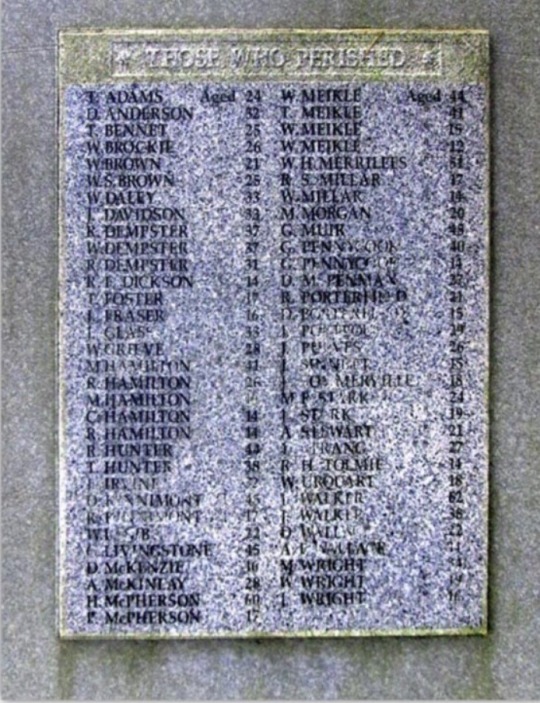
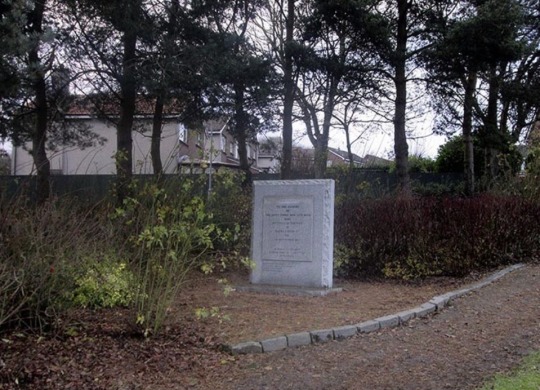

Tragedy struck Midlothian on September 5th 1889 when Sixty-three miners, some as young as thirteen, died in an underground fire at Mauricewood Pit, Penicuik
The cause of which was never discovered, it was the worst mining disaster in the history of the Lothians. Most of them died from suffocation when smoke entered the ventilation system.
The following is extracted from “The Mauricewood Braves” one of Wilsons ‘Mining Lays, Tales and Folk-lore’ published 1916.
“The Mauricewood Pit, at Penicuik, near Edinburgh, took fire on September 5th, 1889, and sixty eight men and boys lost their lives.
The principal product from the pit was ironstone, although coal in small quantities was also produced. The pit had a vertical shaft of 480 feet then a level roadway eastwards of 180 feet and this was followed by a one in eight dip decline of 960 feet (Deaths Incline). Halfway down the decline a steam engine had been erected and another steam engine did duty at the bottom. The steam pipes traversed this route, and it was at the 800 ft slant that the fire broke out among the support timbers. The wood was tinder and inflammable, and it was soon apparent that the conflagration would spread and become disastrous. There were no other outlets to or from the lower level, and unless the men below received a warning note to give them a chance of escape, they must inevitably perish.
Three trapper and pony boys – Robert Hook Tolmie (my own surname but no relation) , aged 14; Michael Hamilton, aged 15; and Thomas Foster, aged 17 years, volunteered to go round the mine and warn all the men below of their danger, but the only shiftman there, his mate was away in another district of the pit- pleaded with the boys not to go away and said that he would go himself to warn the other men of the fires danger, but the boys in unison shouted as they ran
“No, we’ll go” ….. And they went. The brave boys never came back alive.
“They died to save” The bodies of the boys were afterwards recovered (surrounded by over twenty other bodies) near a trapdoor that had got blocked up in the meantime cutting off the avenue of escape. The mine was subsequently flooded to quench the fire that was raging in the workings, and over a year elapsed before the last body was brought to the surface.
The heroism and self-sacrifice of the three lads aroused sympathetic expressions and admiration throughout the mining world, and a monument marks their last resting place in the Penicuik’s KirkHill Cemetery.
Names of Dead
The alphabetical list of names below is from a report in the Scotsman. Among the names is a Robert Tolmie, I wonder if he was some sort of relation to my family, although I did know of some Penicuik Tolmie’s who were not related to us.
Thomas Adams, 7 Manderston Place
David Anderson, 1 Manderston Place
T Bennett, 4 Lindsay Place
William Brockie, 13 Walker Place
William Brown, 1 Lindsay Place
William Brown, Glebe
William Daly, 3 Fieldsend
J Davidson, Edinburgh Rd
Robert Dempster, father, 6 Lindsay Place
R Dempster, son, 6 Lindsay Place
William Dempster, 19 Walker Place
Robert Dickson, 13 Fieldsend
Thomas Foster 13 Leslie Place
John Fraser 27 Napier St
John Glass, Pryde's Place
William Grieve, 5 Leslie Place
C Hamilton, son, Greenlaw Cottages
Mitchell Hamilton, father, Greenlaw Cottages
Mitchell Hamilton, son, Greenlaw Cottages
Robert Hamilton, 4 Leslie Place - uncle of Richard Hamilton, brother-in-law of Robert Tolmie
Richard Hamilton, 4 Leslie Place - nephew of Robert Hamilton
Robert Hunter, Roads farm
William Hunter, 8 Walker Place- father-in-law of David Penman
Thomas Hunter, Pike
James Irvine, 10 Leslie Place
David Kinnimont, father, Roslin
Robert Kinnimont, son, Roslin
William Lamb, 5 Walker Place - son of Robert Lamb, Leven, Fife
George Livingstone, 22 Fieldsend
Alex McInlay, 12 Leslie Place
David McKenzie, 10 Lindsay Place
Hugh McPherson, father, 12 Lindsay Place
Peter McPherson, son, 12 Lindsay Place
Thomas Meikle, 5 Lindsay Place
William Meikle, father, 6 Leslie Place
William Meikle, son, 6 Leslie Place
Walter Meikle, 6 Leslie Place
Robert Millar, 3 Fieldsend - stepson of William Daly
William Miller, 3 Fieldsend - stepson of William Daly
Martin Morgan, Pryde's Place
G Muir, Greenlaw Cottages
David Penman, 8 Walker Place - son-in-law of Wm Hunter
George Pennycuik, father, 12 Walker Place
George Pennycuik, son, 12 Walker Place
D Porterfield (brother of Robert Porterfield)
Robert Porterfield (brother of D Porterfield)
James Porteous, 5 Walker Place
J Purves, 10 Lindsay Place
John Sinnott 7 Fieldsend
James Somerville, 18 Napier St
Alex Stewart, John Street
James Stark, nephew, Pike
M Stark, uncle, Pike
Thomas Strang, 2 Walker Place
Robert Tolmie, brother-in-law of Robert Hamilton
William Urquhart, Eskbridge
John Walker 4 Fieldsend
John Walker, James Place
Andrew Wallace, brothers, 2 Lindsay Place
David Wallace, brothers, 2 Lindsay Place
James Wright, brothers, 9 Lindsay Place
William Wright, brothers, 9 Lindsay Place
Matt Wright, 8 Leslie Place
14 notes
·
View notes
Text

Chancellor Robert R. Livingston by Ezra Ames, 1814-15.
6 notes
·
View notes
Text
okay im still reading through hamilton’s writings (currently on 137 out of 7,657 XD) and i have a few notes that might help out my fellow writers
so out of all the 18th century writing ive read, Hamilton’s is some of the most clear and “grammatically correct” (compared to modern standards). for example, there is a huge contrast between Hamilton’s spelling, and Robert R. Livingston’s
“Dear Sir I last Evening had the pleasure of your favour of the 2d. I am with you exceeding[ly] anxious for the Safety of your State, though the Numbers of the Enemy have been very little part in producing the anxiety…” -Alexander Hamilton to Robert Livingston, August 7, 1777
“Afterwards ye. Irish was made ye. same with ye. British Establishment to wit 530 rank & File… those that were here, recd. scarse any Other Augmentation from Forreign recruts.” -Robert Livingston to Alexander Hamilton, August 2, 1777
in Livingston’s letter, there is more of the phonetic spelling that is more typical of the 18th century, since there wasn’t really a standardized spelling at the time
therefore when you compare these two styles of writing you can really see how clear hamilton’s writing is compared to other well educated 18th century men, despite his impoverished upbringing. its been a while since ive read anything but hamilton’s writing, but thinking back to trying to decipher Laurens’ letters and even Madison’s contributions to The Federalist, Hamilton’s writing is distinctly the closest to modern language.
however hamilton does use A LOT of reverse syntax and double negatives that can make his meaning harder to find. his sentences are borderline run on, but only because he knows where to put his commas, though not without the occasional comma splice or unnecessary semi colon
anyway that’s what i learned today, back into my hole i go
60 notes
·
View notes
Text
Many Founding Fathers Were Shockingly Young When The Declaration Of Independence Was Signed In 1776
How old were the Founding Fathers when the Declaration of Independence was signed in 1776?
Some were older, like Thomas Jefferson who was 33, John Hancock who was 39, or Benjamin Franklin who was 70. Others were shockingly young — even teenagers. James Monroe, for example, was 18 and Alexander Hamilton was 21.
All Things Liberty compiled a list of the ages of key people during the American Revolution (a period spanning from 1765–1783) when the Declaration of Independence was signed.
Here's everyone who was younger than 30 on July 4, 1776, including a few signers of the nation-changing document:
Andrew Jackson, 9
(Major) Thomas Young, 12
Deborah Sampson, 15
James Armistead, 15
Sybil Ludington, 15
Joseph Plumb Martin, 15
Peter Salem, 16
Peggy Shippen, 16
Marquis de Lafayette, 18
James Monroe, 18
Charles Pinckney, 18
Henry Lee III, 20
Gilbert Stuart, 20
John Trumbull, 20
Aaron Burr, 20
John Marshall, 20
Nathan Hale, 21
Banastre Tarleton, 21
Alexander Hamilton, 21
John Laurens, 21
Benjamin Tallmadge, 22
Robert Townsend, 22
George Rogers Clark, 23
David Humphreys, 23
Gouveneur Morris, 24
Betsy Ross, 24
William Washington, 24
James Madison, 25
Henry Knox, 25
John Andre, 26
Thomas Lynch, Jr., 26
Edward Rutledge, 26
Abraham Woodhull, 26
Isaiah Thomas, 27
George Walton, 27
John Paul Jones, 28
Bernardo de Galvez, 29
Thomas Heyward, Jr., 29
Robert R. Livingston, 29
https://www.businessinsider.com/age-of-founding-fathers-on-july-4-1776-2014-7?amp
Liberty Is Loading
14 notes
·
View notes
Photo

This Day in History: The “Real” Independence Day
At about this time in 1776, the Continental Congress declared America’s independence! Did you know that this vote actually occurred on July 2, not July 4?
“That these United Colonies are,” congressional delegates resolved, “and, of right, ought to be, Free and Independent States; that they are absolved from all allegiance to the British crown . . . .”
There would be no more attempts to reconcile with Great Britain.
John Adams was elated, and he thought that July 2 would be celebrated as a memorable day in American history. He wrote Abigail: “The Second Day of July 1776, will be the most memorable Epocha, in the History of America.”
Well, it didn’t quite work out that way, did it? ;) Instead, Americans have chosen to celebrate July 4 as our Independence Day. On that day, Congress finally approved a formal, written Declaration of Independence.
That Declaration was written by a committee of five men: John Adams, Benjamin Franklin, Thomas Jefferson, Robert R. Livingston, and Roger Sherman. The five-man committee, in turn, had appointed a subcommittee—Jefferson and Adams—to come up with the initial draft.
Or, at least, that’s how Adams remembered it.
The story continues here: https://www.taraross.com/post/tdih-july2nd
#tdih#otd#this day in history#history#history blog#declaration of independence#independence day#independence#fourth of july#4th of July#sharethehistory
14 notes
·
View notes
Photo

Cada 4 de julio se festeja una de las fechas patrias más relevantes y significativas de Estados Unidos. Se celebra el Día de la Independencia de los Estados Unidos, Independence Day o The Fourth of July.
Constituye el símbolo del patriotismo estadounidense, siendo un gran orgullo para los norteamericanos portar la bandera y cantar el himno nacional para conmemorar la independencia de los Estados Unidos de Norteamérica.
Breve historia y origen del Día de la Independencia
La Guerra de la Independencia fue un acontecimiento histórico que se desarrolló entre 1775 y 1783, que enfrentó a las trece colonias británicas instauradas en América del Norte contra el Reino de Gran Bretaña.
Finalizó con la batalla de Yorktown y la derrota de los británicos y con la firma del Tratado de París.
El 2 de julio de 1776, el congreso continental, conformado por un grupo de representantes de las colonias estadounidenses del Imperio Británico, votó a favor de la independencia de Estados Unidos.
Posteriormente, el 4 de julio delegados de las Trece Colonias firmaron un documento histórico que constituyó el nacimiento de la independencia americana: la "Declaración de la Independencia".
Fue redactado por Thomas Jefferson, entre otros notables como John Adams, Benjamín Franklin, Robert R. Livingston y Roger Sherman Con este documento se proclamó la separación formal de Estados Unidos del Imperio Británico.
A partir del año 1941 este día nacional se declaró Fiesta Federal.
¿Cómo se celebra este día en Estados Unidos?
Es toda una tradición celebrar esta fecha tan señalada para los norteamericanos. Se enarbola la bandera de Estados Unidos en todos los hogares, edificaciones e instituciones públicas y privadas. Los colores de la bandera nacional (blanco, rojo y azul) resaltan por doquier en decoraciones, accesorios e indumentarias.
Se lleva a cabo el desfile del 4 de julio en todas las ciudades, con cabalgatas y desfiles aéreos por aviones militares que vuelan sobre la capital del país, participando en el "Saludo a Estados Unidos" encabezado por el presidente de la Nación norteamericana.
Igualmente se celebran festivales de música, exposiciones de arte, muestras gastronómicas y conciertos, siendo uno de los más emblemáticos el concierto denominado "A Capital Fourth", en Washington D.C.
Es una ocasión muy especial que reúne a las familias, amigos y conocidos, festejando con hamburguesas, hot dogs y parrilladas o barbacoas. Para finalizar esta gran celebración se organizan diversos espectáculos para el lanzamiento de fuegos artificiales.
¡Feliz 4 de julio! Comparte imágenes, videos e información interesante sobre el Día de la Independencia en EEUU, en las redes sociales. Utiliza el hashtag #IndependenceDay
2 notes
·
View notes
Text
Pittsburgh Steamboats: The New Orleans
The Maiden Voyage of the Steamboat New Orleans
The New Orleans was the initial steamboat to sail the western waters of the United States. Its ownership lied with Robert Fulton and Robert R. Livingston, and it was fabricated by Nicholas Roosevelt. In 1811-1812, it traveled from Pittsburgh, Pennsylvania to New Orleans, Louisiana, using the Ohio and Mississippi rivers, thus beginning the epoch of…

View On WordPress
0 notes
Text

Thank u @kiliane who sent me the idea & reference and I immediately did this😭😭😭 this is so funny..
It’s been a long time since I draw these New Yorker boys () I somehow wanted to draw them again in dgrp au style
53 notes
·
View notes
Text
Industry and Enterprise Letter
Letter to potential
Creative Industries Placement .
Robert J Livingstone r [email protected].
Dear Sir/Made
Thank you for taking the time to read this letter .I have chosen to contact GMoA as part of my Contemporary Undergraduate years studies at City of Glasgow college.
As part of our studies in the creative industries I have been given the opportunity to contact Employers within the creative industries with a view to engaging in a work placement . The criteria of the work placement I have been asked to undertake, is to complete 40 hours of work which can be arranged by the provider and student .
The placement can carried out over one working week or spaced out over a series of weeks on individual days to suit both the student and the placement provider . The scheduled days would be agreed and set in place beforehand although flexibility by City of Glasgow college would be possible if you had for unforeseen circumstances where a scheduled day had to be rearranged .
As Contemporary Art student working towards an employment roll in the creative industries I would be very engaged in learning about the various rolls and functionality of GMoA . This insight would give me a far greater understanding of how a gallery works to serve the public and exhibiting artists . I would be very grateful if you would consider this proposition of being a work placement provider in assisting me in further developing my learning and understanding of the creative industries .
Your Sincerely
Robert Livingstone
1 note
·
View note
Photo
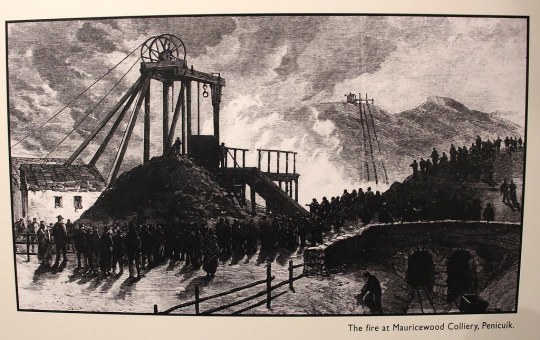
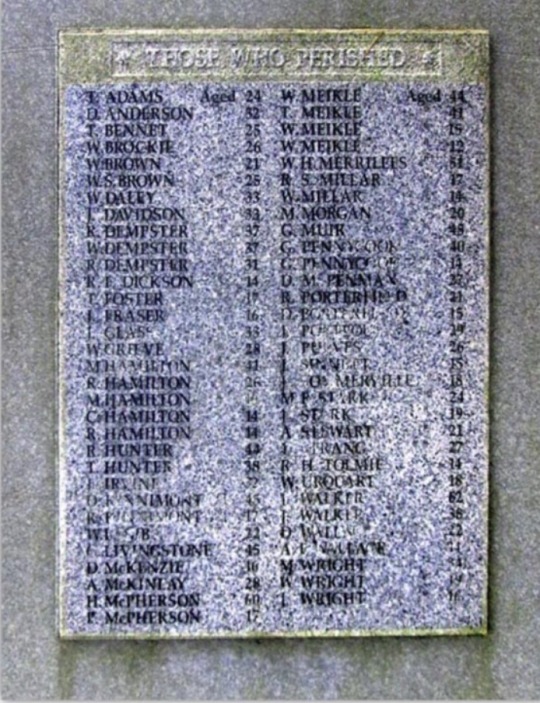

Tragedy struck Midlothian on September 5th 1889 when Sixty-three miners, some as young as thirteen, died in an underground fire at Mauricewood Pit, Penicuik
The cause of which was never discovered, it was the worst mining disaster in the history of the Lothians. Most of them died from suffocation when smoke entered the ventilation system.
The following is extracted from “The Mauricewood Braves” one of Wilsons ‘Mining Lays, Tales and Folk-lore’ published 1916.
“The Mauricewood Pit, at Penicuik, near Edinburgh, took fire on September 5th, 1889, and sixty eight men and boys lost their lives.
The principal product from the pit was ironstone, although coal in small quantities was also produced. The pit had a vertical shaft of 480 feet then a level roadway eastwards of 180 feet and this was followed by a one in eight dip decline of 960 feet (Deaths Incline). Halfway down the decline a steam engine had been erected and another steam engine did duty at the bottom. The steam pipes traversed this route, and it was at the 800 ft slant that the fire broke out among the support timbers. The wood was tinder and inflammable, and it was soon apparent that the conflagration would spread and become disastrous. There were no other outlets to or from the lower level, and unless the men below received a warning note to give them a chance of escape, they must inevitably perish.
Three trapper and pony boys – Robert Hook Tolmie (my own surname but no relation) , aged 14; Michael Hamilton, aged 15; and Thomas Foster, aged 17 years, volunteered to go round the mine and warn all the men below of their danger, but the only shiftman there, his mate was away in another district of the pit- pleaded with the boys not to go away and said that he would go himself to warn the other men of the fires danger, but the boys in unison shouted as they ran
“No, we’ll go” ….. And they went. The brave boys never came back alive.
“They died to save” The bodies of the boys were afterwards recovered (surrounded by over twenty other bodies) near a trapdoor that had got blocked up in the meantime cutting off the avenue of escape. The mine was subsequently flooded to quench the fire that was raging in the workings, and over a year elapsed before the last body was brought to the surface.
The heroism and self-sacrifice of the three lads aroused sympathetic expressions and admiration throughout the mining world, and a monument marks their last resting place in the Penicuik’s KirkHill Cemetery.
Names of Dead
The alphabetical list of names below is from a report in the Scotsman. Among the names is a Robert Tolmie, I wonder if he was some sort of relation to my family, although I did know of some Penicuik Tolmie’s who were not related to us.
Thomas Adams, 7 Manderston Place
David Anderson, 1 Manderston Place
T Bennett, 4 Lindsay Place
William Brockie, 13 Walker Place
William Brown, 1 Lindsay Place
William Brown, Glebe
William Daly, 3 Fieldsend
J Davidson, Edinburgh Rd
Robert Dempster, father, 6 Lindsay Place
R Dempster, son, 6 Lindsay Place
William Dempster, 19 Walker Place
Robert Dickson, 13 Fieldsend
Thomas Foster 13 Leslie Place
John Fraser 27 Napier St
John Glass, Pryde's Place
William Grieve, 5 Leslie Place
C Hamilton, son, Greenlaw Cottages
Mitchell Hamilton, father, Greenlaw Cottages
Mitchell Hamilton, son, Greenlaw Cottages
Robert Hamilton, 4 Leslie Place - uncle of Richard Hamilton, brother-in-law of Robert Tolmie
Richard Hamilton, 4 Leslie Place - nephew of Robert Hamilton
Robert Hunter, Roads farm
William Hunter, 8 Walker Place- father-in-law of David Penman
Thomas Hunter, Pike
James Irvine, 10 Leslie Place
David Kinnimont, father, Roslin
Robert Kinnimont, son, Roslin
William Lamb, 5 Walker Place - son of Robert Lamb, Leven, Fife
George Livingstone, 22 Fieldsend
Alex McInlay, 12 Leslie Place
David McKenzie, 10 Lindsay Place
Hugh McPherson, father, 12 Lindsay Place
Peter McPherson, son, 12 Lindsay Place
Thomas Meikle, 5 Lindsay Place
William Meikle, father, 6 Leslie Place
William Meikle, son, 6 Leslie Place
Walter Meikle, 6 Leslie Place
Robert Millar, 3 Fieldsend - stepson of William Daly
William Miller, 3 Fieldsend - stepson of William Daly
Martin Morgan, Pryde's Place
G Muir, Greenlaw Cottages
David Penman, 8 Walker Place - son-in-law of Wm Hunter
George Pennycuik, father, 12 Walker Place
George Pennycuik, son, 12 Walker Place
D Porterfield (brother of Robert Porterfield)
Robert Porterfield (brother of D Porterfield)
James Porteous, 5 Walker Place
J Purves, 10 Lindsay Place
John Sinnott 7 Fieldsend
James Somerville, 18 Napier St
Alex Stewart, John Street
James Stark, nephew, Pike
M Stark, uncle, Pike
Thomas Strang, 2 Walker Place
Robert Tolmie, brother-in-law of Robert Hamilton
William Urquhart, Eskbridge
John Walker 4 Fieldsend
John Walker, James Place
Andrew Wallace, brothers, 2 Lindsay Place
David Wallace, brothers, 2 Lindsay Place
James Wright, brothers, 9 Lindsay Place
William Wright, brothers, 9 Lindsay Place
Matt Wright, 8 Leslie Place
7 notes
·
View notes
Text
Continental Congress votes for independence from Britain
The Second Continental Congress, assembled in Philadelphia, formally adopts Richard Henry Lee’s resolution for independence from Great Britain. The vote is unanimous, with only New York abstaining.
The resolution had originally been presented to Congress on June 7, but it soon became clear that New York, New Jersey, Pennsylvania, Delaware, Maryland and South Carolina were as yet unwilling to declare independence, though they would likely be ready to vote in favor of a break with England in due course. Thus, Congress agreed to delay the vote on Lees Resolution until July 1. In the intervening period, Congress appointed a committee to draft a formal declaration of independence. Its members were John Adams of Massachusetts, Benjamin Franklin of Pennsylvania, Roger Sherman of Connecticut, Robert R. Livingston of New York and Thomas Jefferson of Virginia. Thomas Jefferson, well-known to be the best writer of the group, was selected to be the primary author of the document, which was presented to Congress for review on June 28, 1776.
On July 1, 1776, debate on the Lee Resolution resumed as planned, with a majority of the delegates favoring the resolution. Congress thought it of the utmost importance that independence be unanimously proclaimed. To ensure this, they delayed the final vote until July 2, when 12 colonial delegations voted in favor of it, with the New York delegates abstaining, unsure of how their constituents would wish them to vote. John Adams wrote that July 2 would be celebrated as the most memorable epoch in the history of America. Instead, the day has been largely forgotten in favor of July 4, when Jeffersons edited Declaration of Independence was adopted.
1 note
·
View note
Link
0 notes
Text
Events 6.11
173 – Marcomannic Wars: The Roman army in Moravia is encircled by the Quadi, who have broken the peace treaty (171). In a violent thunderstorm emperor Marcus Aurelius defeats and subdues them in the so-called "miracle of the rain".
631 – Emperor Taizong of Tang sends envoys to the Xueyantuo bearing gold and silk in order to seek the release of Chinese prisoners captured during the transition from Sui to Tang.
786 – A Hasanid Alid uprising in Mecca is crushed by the Abbasids at the Battle of Fakhkh.
980 – Vladimir the Great consolidates the Kievan realm from Ukraine to the Baltic Sea. He is proclaimed ruler (knyaz) of all Kievan Rus'.
1011 – Lombard Revolt: Greek citizens of Bari rise up against the Lombard rebels led by Melus and deliver the city to Basil Mesardonites, Byzantine governor (catepan) of the Catepanate of Italy.
1118 – Roger of Salerno, Prince of Antioch, captures Azaz from the Seljuk Turks.
1157 – Albert I of Brandenburg, also called The Bear (Ger: Albrecht der Bär), becomes the founder of the Margraviate of Brandenburg, Germany and the first margrave.
1345 – The megas doux Alexios Apokaukos, chief minister of the Byzantine Empire, is lynched by political prisoners.
1429 – Hundred Years' War: Start of the Battle of Jargeau.
1488 – Battle of Sauchieburn: Fought between rebel Lords and James III of Scotland, resulting in the death of the king.
1509 – Henry VIII of England marries Catherine of Aragon.
1559 – Don Tristan de Luna y Arellano sails for Florida with party of 1,500, intending to settle on gulf coast (Vera Cruz, Mexico).
1594 – Philip II recognizes the rights and privileges of the local nobles and chieftains in the Philippines, which paved way to the stabilization of the rule of the Principalía (an elite ruling class of native nobility in Spanish Philippines).
1748 – Denmark adopts the characteristic Nordic Cross flag later taken up by all other Scandinavian countries.
1770 – British explorer Captain James Cook runs aground on the Great Barrier Reef.
1775 – The American Revolutionary War's first naval engagement, the Battle of Machias, results in the capture of a small British naval vessel.
1776 – The Continental Congress appoints Thomas Jefferson, John Adams, Benjamin Franklin, Roger Sherman, and Robert R. Livingston to the Committee of Five to draft a declaration of independence.
1788 – Russian explorer Gerasim Izmailov reaches Alaska.
1805 – A fire consumes large portions of Detroit in the Michigan Territory.
1825 – The first cornerstone is laid for Fort Hamilton in New York City.
1837 – The Broad Street Riot occurs in Boston, fueled by ethnic tensions between Yankees and Irish.
1865 – The Naval Battle of the Riachuelo is fought on the rivulet Riachuelo (Argentina), between the Paraguayan Navy on one side and the Brazilian Navy on the other. The Brazilian victory was crucial for the later success of the Triple Alliance (Brazil, Uruguay, and Argentina) in the Paraguayan War.
1892 – The Limelight Department, one of the world's first film studios, is officially established in Melbourne, Australia.
1895 – Paris–Bordeaux–Paris, sometimes called the first automobile race in history or the "first motor race", takes place.
1898 – The Hundred Days' Reform, a planned movement to reform social, political, and educational institutions in China, is started by the Guangxu Emperor, but is suspended by Empress Dowager Cixi after 104 days. (The failed reform led to the abolition of the Imperial examination in 1905.)
1901 – The boundaries of the Colony of New Zealand are extended by the UK to include the Cook Islands.
1903 – A group of Serbian officers storms the royal palace and assassinates King Alexander I of Serbia and his wife, Queen Draga.
1917 – King Alexander assumes the throne of Greece after his father, Constantine I, is deemed to have abdicated under pressure from allied armies occupying Athens.
1919 – Sir Barton wins the Belmont Stakes, becoming the first horse to win the U.S. Triple Crown.
1920 – During the U.S. Republican National Convention in Chicago, U.S. Republican Party leaders gathered in a room at the Blackstone Hotel to come to a consensus on their candidate for the U.S. presidential election, leading the Associated Press to coin the political phrase "smoke-filled room".
1935 – Inventor Edwin Armstrong gives the first public demonstration of FM broadcasting in the United States at Alpine, New Jersey.
1936 – The London International Surrealist Exhibition opens.
1937 – Great Purge: The Soviet Union under Joseph Stalin executes eight army leaders.
1938 – Second Sino-Japanese War: The Battle of Wuhan starts.
1940 – World War II: The Siege of Malta begins with a series of Italian air raids.
1942 – World War II: The United States agrees to send Lend-Lease aid to the Soviet Union.
1942 – Free French Forces retreat from Bir Hakeim after having successfully delayed the Axis advance.
1944 – USS Missouri, the last battleship built by the United States Navy and future site of the signing of the Japanese Instrument of Surrender, is commissioned.
1955 – Eighty-three spectators are killed and at least 100 are injured after an Austin-Healey and a Mercedes-Benz collide at the 24 Hours of Le Mans, the deadliest ever accident in motorsports.
1956 – Start of Gal Oya riots, the first reported ethnic riots that target minority Sri Lankan Tamils in the Eastern Province. The total number of deaths is reportedly 150.
1962 – Frank Morris, John Anglin and Clarence Anglin allegedly become the only prisoners to escape from the prison on Alcatraz Island.
1963 – American Civil Rights Movement: Governor of Alabama George Wallace defiantly stands at the door of Foster Auditorium at the University of Alabama in an attempt to block two black students, Vivian Malone and James Hood, from attending that school. Later in the day, accompanied by federalized National Guard troops, they are able to register.
1963 – Buddhist monk Thích Quảng Đức burns himself with gasoline in a busy Saigon intersection to protest the lack of religious freedom in South Vietnam.
1963 – John F. Kennedy addresses Americans from the Oval Office proposing the Civil Rights Act of 1964, which would revolutionize American society by guaranteeing equal access to public facilities, ending segregation in education, and guaranteeing federal protection for voting rights.
1964 – World War II veteran Walter Seifert attacks an elementary school in Cologne, Germany, killing at least eight children and two teachers and seriously injuring several more with a home-made flamethrower and a lance.
1968 – Lloyd J. Old identified the first cell surface antigens that could differentiate among different cell types.
1970 – After being appointed on May 15, Anna Mae Hays and Elizabeth P. Hoisington officially receive their ranks as U.S. Army Generals, becoming the first women to do so.
1971 – The U.S. Government forcibly removes the last holdouts to the Native American Occupation of Alcatraz, ending 19 months of control.
1978 – Altaf Hussain founds the student political movement All Pakistan Muhajir Students Organisation (APMSO) in Karachi University.
1981 – A magnitude 6.9 earthquake at Golbaf, Iran, kills at least 2,000.
1987 – Diane Abbott, Paul Boateng and Bernie Grant are elected as the first black MPs in Great Britain.
1998 – Compaq Computer pays US$9 billion for Digital Equipment Corporation in the largest high-tech acquisition.
2001 – Timothy McVeigh is executed for his role in the Oklahoma City bombing.
2002 – Antonio Meucci is acknowledged as the first inventor of the telephone by the United States Congress.
2004 – Cassini–Huygens makes its closest flyby of the Saturn moon Phoebe.
2007 – Mudslides in Chittagong, Bangladesh, kill 130 people.
2008 – Canadian Prime Minister Stephen Harper makes a historic official apology to Canada's First Nations in regard to abuses at a Canadian Indian residential school.
2008 – The Fermi Gamma-ray Space Telescope is launched into orbit.
2010 – The first African FIFA World Cup kicks off in South Africa.
2012 – More than 80 people die in a landslide triggered by two earthquakes in Afghanistan; an entire village is buried.
2013 – Greece's public broadcaster ERT is shut down by then-prime minister Antonis Samaras. It would open exactly two years later by then-prime minister Alexis Tsipras.
0 notes